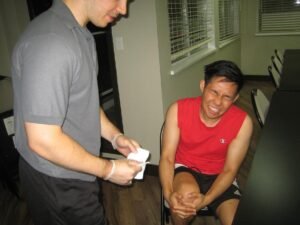Runner’s knee or chondromalacia is a condition in which the cartilage on the undersurface of the knee cap or patella deteriorates and softens. This condition is quite common among young athletic individuals but can also develop in older adults suffering from arthritis of the knee.
It is also considered as an overuse injury in sports especially in running. This is oftentimes treated by rest. In some cases, it can be due to incorrect alignment of the knee that could not be treated by rest. The condition is described with pain in the knee and grinding vibrations yet many do not seek medical care.
Causes of chondromalacia
The kneecap is positioned right above the knee joint. When bending the knee, the movement triggers the gliding of the backside of the kneecap over the bones of the knee, particularly the femur. The ligaments and tendon connect the kneecap to the shinbone and the thigh muscle to the kneecap. Once these components fails to move properly, the kneecap will rub against the bone, resulting to deterioration in the patella.
Improper movement of the kneecap can be caused by:
- Weak hamstrings and quadriceps
- Poor alignment caused by a congenital condition
- Direct trauma or blow to the kneecap
- Continuous stress to the knee joints
Who is at risk for developing chondromalacia?
There are several risk factors for developing the condition:
- Age – young adults and adolescents are prone to this condition since the growth spurts involving the bones and muscles can contribute to short-term muscle imbalances.
- Gender – women are more prone to develop the condition than men since they have fewer muscle mass than men. As a result, it can lead to abnormal positioning of the knee and lateral force on the kneecap.
- Previous injuries – any injury to the kneecap can increase the risk for developing chondromalacia.
- Flat feet – individuals who have flat feet adds stress on the knee joints
- High level of activity – those who engage in rigorous activities or exercises that put pressure on the knee joints are at high risk for developing the condition.
Symptoms of chondromalacia

The condition usually manifests with pain in the knee area called as patellofemoral pain. There is also a grinding sensation or cracking once the knee is bent or extended. The pain can get worse after sitting for an extended period or when performing activities that put pressure on the knees.
If the knee pain does not improve within a few days or worsens, it is best to consult your doctor.
Treatment for chondromalacia
The main objective of treatment for the condition is to minimize the pressure on the kneecap and joint. The basic first aid measures include the application of ice on the affected joint, immobilizing and allowing the individual to rest. Take note that the damage on the cartilage resulting to chondromalacia can often heal on its own with enough rest.
Anti-inflammatory medications will be prescribed by your doctor to minimize the inflammation around the joint. In case tenderness, swelling and pain persist, the treatment options recommended include physical therapy and surgery.
